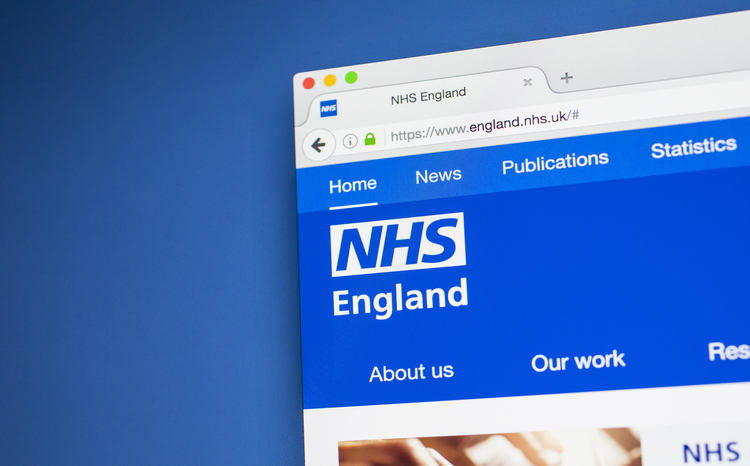Learn from past mistakes to achieve ambitions for integrated care
- 7 July 2022

Alastair Allen, chief technology officer at Better explores what needs to be done in order to achieve integrated care.
It’s been almost a year since the Department of Health and Social Care published the draft Data Saves Lives Strategy, in which the then health secretary, Matt Hancock’s pledge to separate patient data from the application layer was formalised. But with the words “separating data” left out of the formalised strategy, are we moving away from the prospect of open data platforms — using standard frameworks such as openEHR — towards an insular, single-system approach that limits the potential of valuable health and care data? Recent narrative surrounding the convergence of electronic patient records (EPRs) suggests that this may well be the case, representing a potential blow for the wider ambitions for achieving true interoperability across the health and care estate.
The problem lies in the fact that a single system approach typically adopts an application-centric architecture, with data fully integrated as part of an app. Each app is responsible for storing, protecting, auditing, and sharing its data, which is often held in closed or proprietary formats – making data use, and reuse, difficult. Further to this, the likelihood is that, even if we take a ‘single-system’ approach, individual EPRs will still be used across different care settings, meaning that the entire system will be underpinned by complex and costly integration processes, fragmented information sharing, and limited data insights, with information being moved around with a lack of fluency between applications.
With the challenges of delivering integrated care across the health and care landscape becoming increasingly apparent, the prospect of adopting open standards in this way is alarming. After all, the NHS has been attempting variations of this approach for 20 years, and it isn’t really any closer to reaching a health system that is “interoperable”. It is time to take a different approach. If we are going to achieve true interoperability and realise the government’s latest ambitions, we need to move away from a system that gives vendors too much control over health and care data, to a model in which data is held in open, longitudinal, and vendor-neutral formats that improve access and enable innovation.
The risk of reverting to type
A failure to revise our delivery approach and adopt new information architecture risks derailing government proposals for each ICS to implement a population health platform that uses joined up data to support planning, proactive population health management, and precision public health by 2025. It also makes plans for new systems to link and combine data to enable improved direct care and better analytics for population health management wholly unrealistic.
To understand why, we needn’t look further than the COVID-19 pandemic and the impact it’s had on patient behaviour, with the increased use of medical technologies encouraging people to be more engaged with their health, and increasingly eager to take ownership of their care. As a result, new and emerging streams of data are being collected by and on behalf of the individual, making the delivery of integrated care across a large, fragmented health and care estate even more difficult.
This trend will inevitably continue as we witness a shift in health and care delivery, from the traditional “sickness model” to a “wellness model”, giving rise to huge new streams of behavioural, social, and environmental data from the so-called Internet of Medical Things (IoMT). The idea that a single system can provide suitable storage mechanisms for this data is a stretch to say the least. And even if it could, the potential for sharing insights, analytics, and AI models would be severely limited, given the probability of data being held in propriety formats that do not translate across different systems.
By way of contrast, data-centric architecture will allow information to be stored using a commonly defined model and understood at the point of care, facilitating ease of use for both direct care and secondary use. It will also allow for the NHS to be systematically designed so that all applications speak the same language, thus improving collaboration and the ability to share and re-use innovation across the country. It makes perfect sense.
With this in mind, my message is not to underestimate the problems associated with sharing data effectively between systems, or the difficulty of doing so. If we are going to maintain the innovation precedent set during the pandemic, we need to keep sight of “Hancock’s vision” for the role of digital and data in the NHS – normalising data so that it doesn’t have to be moved around, and ensuring that it can be accessed by the people who need it. Doing so will allow us to realise the immense value of health and care data and accelerate transformation across the NHS estate.





3 Comments
My experience of working in NPfIT told me that the NHS is incapable of learning from its mistakes and is destined to repeat them. Nothing I’ve heard since has disabused me of this belief!
Hi Richard – thanks for your comment. I would be very happy to discuss the concrete implementation details with you, or feel free to have a read at another one of my articles — https://medium.com/@alastairallen/why-openehr-is-eating-healthcare-e28bd792c50c — for some examples of where this idea is being adopted, including across One London, the Christie, Wales and Catalonia.
AA
Articlesl ike this infuriate me.They debate strategy in an abstract blur, when strategy should have been laid down years ago, and we should be discussing implementation now.
And there are no mentions of standards, on which the whole structure should be built.
Comments are closed.